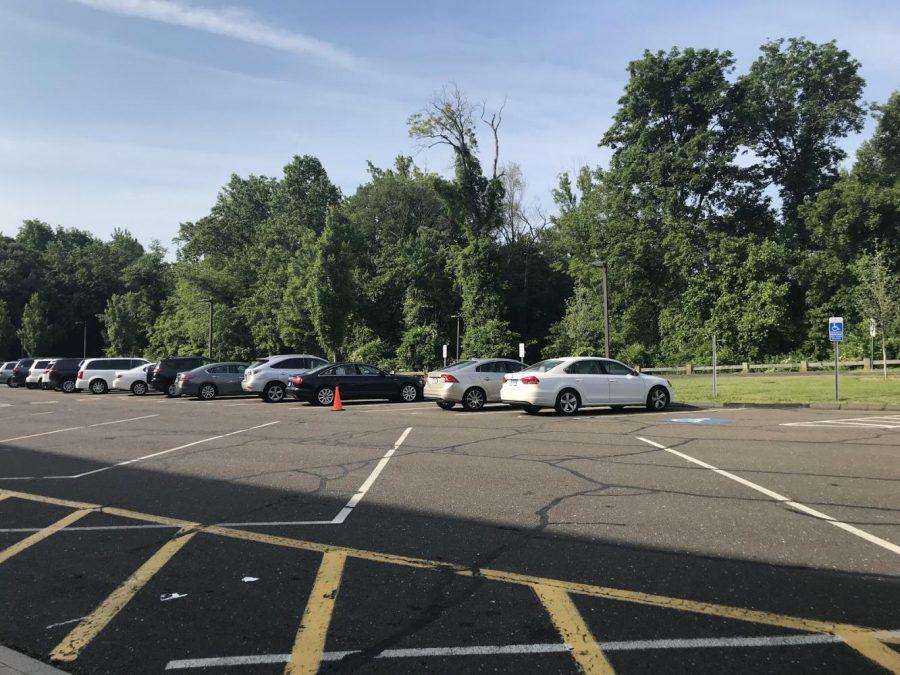By Lauren Wasserman ’19
Getting stopped every two seconds by the bus in front of you, while you pretend to be speeding away with wind in your hair: this is the freedom that comes with a driver’s license. You’ve worked your way through drivers ed and daily Wakeman hikes –– now it is time for your long-awaited junior parking spot. You go to get your spot, shaking with excitement as you walk up to the grand desk. And finally, when all of your vehicular struggles seem to be over, you are handed a baseball lot spot. Is this a joke?
I arrived extremely early on the day I got my junior parking spot so I could get a better lot. The students around me seemed to be getting spots adjacent to the cafeteria, so I was thrilled. In fact, I actually got that lucky cafeteria spot. Glorious spot 288. Driving to school was a dream come true, at least until I was called into the AP’s office. My beautiful spot was ripped away from me (as they accidently gave me a teacher spot) and exchanged it for spot 592, which was comparatively dreadful due to the fact it was isolated from everything.
The system of junior parking is completely unfair. Are we really basing it off of the time a junior gets to the AP’s office? What if a student has third lunch, is sick or was getting their license the next day? None of that is taken into thought when distributing these passes. Instead, the school relies upon a system of randomization based on arrival. It would make more sense if juniors got to request their spots, both for personal convicence and fairness in this system that currently upsets so many.
If someone swims everyday, and someone has baseball practice everyday, what crazy logic dictates that we should give the swimmer a spot by the field and the baseball player the pool spot? It makes no sense. I personally have no use of the baseball lot; however, I am stuck with it. Meanwhile, some baseball player might be begging for my spot.
Randomizing the spots gives students disadvantages that could easily be avoided if we relied upon different system. The current system seems to be an indolent excuse to avoid organizing parking spots by want. Staples is notorious for its traffic, and rather than having everyone zig-zag around each other, it would make more sense to give kids the most beneficial spots. Students who don’t do after school activities should park by the tennis courts so they don’t get caught in the after-school traffic. Students who do lacrosse should occupy spots near the lacrosse fields. The system has the potential to be so simple.
If students got some say in the system we would all have equal odds at getting the spot of our choice. Although this does not guarantee each student will get a convenient spot for themselves, it at least allows for the opportunity.
Photo by Lauren Wasserman ’19














































